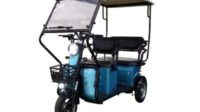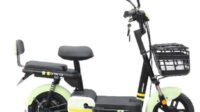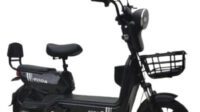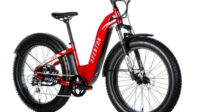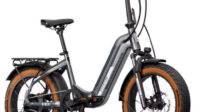
E-Mountain bikes, also known as electric mountain bikes, have been a game-changer in the world of cycling. They combine the agility of traditional mountain bikes with the added power of a battery-operated motor. Riding an E-Mountain bike can be an exhilarating experience, but many still wonder how these bikes operate and what sets them apart from their non-electric counterparts. In this comprehensive guide, we’ll delve into the mechanics of E-Mountain bikes, covering various aspects such as power modes, battery range, motors, display controls, speed restrictions, and where you can ride them.
Throttle Assist vs. Pedal Assist: The Basics
E-Mountain bikes fall into two main categories: throttle assist and pedal assist. Understanding this distinction is fundamental to grasping how these bikes operate.
Throttle Assist vs. Pedal Assist
Throttle assist E-Mountain bikes allow riders to activate the motor without pedaling. This can be done by twisting a grip or pressing a button, and the bike moves forward without the need for pedaling. In contrast, pedal assist E-Mountain bikes require riders to pedal actively for the motor to engage. Without pedaling, these bikes won’t move, and this is the category we’ll be focusing on in this guide.
The Three Key Components of an E-Mountain Bike
E-Mountain bikes consist of three primary components that define their functionality: the battery, the motor, and the control unit. Understanding how these elements work together is crucial to unlocking the full potential of these electric mountain bikes.
The Three Key Components
- The Battery: E-Mountain bike batteries come in various shapes and sizes, ranging from externally mounted ones to integrated options. These batteries are measured in watt-hours, with larger batteries offering more mileage.
- The Motor: When it comes to motors, E-Mountain bikes come with options. Hub drive units are mounted in the rear wheel, making them suitable for commuting and light mountain biking. For more intense off-road experiences, mid-drive units are placed in the middle of the bike and power the cranks rather than the wheel itself.
- Control Unit: The display and control unit differ between brands. They provide riders with essential information about battery range, power modes, cadence, mileage, and average speed. These heads-up displays can vary in complexity, with some offering advanced features like sat-nav.
Exploring Power Modes: Customizing Your Ride
E-Mountain bikes offer various levels of assistance, which can be customized through power modes. The number of available power modes may vary depending on the bike’s system.
Power Modes
Most E-Mountain bikes provide riders with multiple power modes, which can be adjusted via a mode switch. For example, the Shimano E8000 system offers settings ranging from “off” to “boost.” In “off” mode, the bike feels like a heavy standard mountain bike, offering minimal assistance. The “ECO” mode provides 120% assistance, while “trail” offers a moderate level of assistance. The “boost” mode offers 300% assistance, making it ideal for conquering technical climbs.
Battery Range: How Far Can You Go?
E-Mountain bike batteries have varying capacities, and understanding their range is crucial for planning your rides. However, several factors can affect battery life.
Battery Range Calculator
Some battery manufacturers offer range calculators on their websites, allowing riders to estimate how many miles they can expect from their E-Mountain bike battery. The heads-up display on the bike also predicts the remaining miles based on the selected power mode. Factors influencing battery range include ride intensity, elevation, trail conditions, temperature, tire choice, and more.
Operating an E-Mountain Bike: A Simple Process
While the technology behind E-Mountain bikes may seem complex, riding one is surprisingly straightforward.
How Does It Work?
Operating an E-Mountain bike is as simple as finding the power switch, turning it on, and waiting for the system to start up. Once ready, you can begin your ride by selecting a power mode, such as “ECO,” “trail,” or “boost.” The key to engaging the motor is to start pedaling. As you pedal, the motor senses the load and provides assistance accordingly, making your ride feel like you’re getting a push on flat terrain or during steep climbs.
Speed Restrictions: How Fast Can You Go?
E-Mountain bikes typically have speed restrictions that vary by location. Understanding these limits is important to stay within the law.
Speed Restrictions
In most of Europe, E-Mountain bikes are restricted to a speed of 25 kilometers per hour. However, in the United States and Canada, this limit is slightly higher, at 32 kilometers per hour. It’s important to note that these restrictions pertain to the speeds at which the motor assists you. You can still pedal faster than these limits, especially when riding downhill or on level terrain.
Where Can You Ride E-Mountain Bikes?
The legality of riding E-Mountain bikes varies from place to place, and it’s essential to be aware of local regulations.
Where Can You Ride?
In many regions, you can ride an E-Mountain bike wherever traditional mountain bikes are allowed. However, it’s crucial to stay informed about local rules and restrictions, as regulations change over time.
Also read about How to Reset E-bike Battery.
Licensing Requirements: Do You Need a License?
Whether or not you need a license to ride an E-Mountain bike depends on the type of bike you’re using and local laws.
Do You Need a License?
For standard, restricted E-Mountain bikes, you generally do not need a license. However, for higher-powered models like R-Pedelecs and S-Pedelecs, licensing, tax, insurance, and a proper motorcycle-style helmet may be required. Regulations regarding E-Mountain bike licensing vary globally, so it’s essential to check the specific rules in your area.
Conclusion: Mastering the Art of E-Mountain Biking
E-Mountain bikes have transformed the world of cycling, offering an exciting blend of traditional riding with electric assistance. Understanding the mechanics behind these bikes, including power modes, battery range, motors, and controls, is key to maximizing your E-Mountain biking experience. With the knowledge of how these bikes work and the rules governing their use, you can embark on thrilling off-road adventures while staying in compliance with local regulations.
E-Mountain biking opens up a world of possibilities, allowing riders to conquer steep climbs and explore new terrain with ease. Whether you’re a seasoned mountain biker or new to the sport, E-Mountain bikes offer an exhilarating and accessible way to enjoy the great outdoors.
- 12 Kata-Kata Bijak Pentingnya Komunikasi yang Baik, Tiket Menuju Sukses – November 15, 2023
- 35 Quotes tentang Public Speaking yang Menginspirasi – November 15, 2023
- Review Sepeda Listrik Uwinfly Dragonfly 7 (DF7) – November 14, 2023


